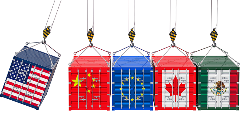News
Does India’s food advertising landscape need an overhaul?
16 Oct 2024Nutrition Advocacy in Public Interest (NAPi) releases a new report on perceived tactics used in India’s food sector to promote HFSS and UPF products.

A report by Indian Nutrition Advocacy in Public Interest (NAPi), a think tank, reveals the marketing and advertising tactics used by the country’s food industry to encourage unhealthy food consumption. The report classifies unhealthy foods as ultra-processed foods (UPFs) or those high in sugar, salt, and/or fat (HFSS).
The report explores how food advertisements attract shoppers and encourage them to purchase and eat their products. NAPi examined 43 food advertisements according to the type of advertising used to promote them. The report specifies whether these are misleading or not, using the definition of “misleading advertisement” from the Consumer Protection Act 2019. Based on their analysis of the nutritional contents of advertised food products in India, NAPi proposes front-of-packaging labels.
The authors make several recommendations, including amending existing legal frameworks and creating a new public health law to prevent unhealthy food marketing. They suggest this takes place via the accelerated implementation of the country’s blueprint, the National Multi-sector Action Plan on Prevention of Common NCDs (NMAP).
Food marketing in India
India’s food marketing and advertising landscape is significantly evolving, which inspired the NAPi report and its title, ‘50 Shades of Food Advertising’. Today, food marketing and advertising primarily focus on digital platforms and social media, though print media remains relevant.
“[A]ds often sell convenience, happiness, aspirations, addictive tastes, belongingness, and lifestyles by leveraging celebrities, social media influencers, use of children and celebrity chefs,” Dr Nupur Bidla, Member of the Nutrition Advocacy in Public Interest (NAPi) in India, told Ingredients Network.
Food brands in India are also entering partnerships with government institutions and “healthwash their brand image”, Bidla said. “This allows them a foot in the government doors, which acts as a deterrent to bring in strong regulation to curb marketing,” Bidla added.
Ads appeal to consumers via free offers, such as mobile recharge, free abroad trips or celebrity-meet-and-greets. “Weak implementation of regulations and lack of sanctions or fines often lead to rampant misleading advertisements, especially in the food and beverage domain,” Bidla said.
The regulatory and scientific landscape
Several food marketing and advertising regulations and policies apply in India. The Department of Consumer Affairs and the Food Safety and Standards Authority of India (FSSAI) are responsible for regulating misleading marketing practices.
Despite their presence, there are concerns about enforcement. “While the Consumer Affairs Department has strong, well-defined regulations, misleading food and beverage advertisements remain widespread,” said Bidla. “Despite this, there is little public transparency regarding investigations or sanctions against companies,” Bidla added.
“The grievance redressal process is often one-sided, with complainants rarely updated,” said Bidla. Instead, authorities typically seek an explanation from the company and close the case without further action.
The existing Advertising Code for all digital ads by the Ministry of Information and Broadcast and the Code of Journalistic Conduct for print ads by the Press Council India should be amended to include packaged ultra-processed foods and packaged HFSS foods and beverages as addictive substances, the NAPi member stated. “There is enough scientific evidence to support that, and we must ban their advertisements like alcohol and cigarettes,” Bidla said.
NAPi references growing scientific evidence on UPFs and HFSS in its report. “There is no reason not to use [scientific evidence] to develop policy and programmes towards lowering the consumption of HFSS-UPFs in India,” the NAPi report said.
In June 2024, the Government of India’s ICMR-National Institute of Nutrition (NIN) launched a new educational resource detailing dietary guidelines. The document defined HFSS and UPFs and provided thresholds for ‘solid’ and ‘liquid’ foods for nutrients of concern, such as energy, sugars, saturated fats, and sodium per 100 grams or 100 ml.
“These policy statements imply that the Government has a sufficient and clear understanding that increasing consumption of unhealthy food products is associated with increasing obesity and diabetes in India,” NAPi said in its report.
Following its publication, 50 Shades of Food Advertising has received significant media attention and support, helping to foster this conversation. “Policymakers are recognising our analysis and encouraging us to report more complaints,” Bidla said, providing one of the main takeaways from the report.
Putting a stop to misleading advertising
In their report, the authors aimed to initiate a dialogue about the misleading nature of packaged food marketing and advertising in India. “The report threw up surprising findings: emotional manipulation is found in every advertisement,” said Bidla.
The report found that ads for food and beverage products classified as HFSS and UPFs rely on emotional appeals, celebrity endorsements, visually appealing imagery and sensory stimuli to position products as sought-after options in the Indian market. In addition, it said the deliberate use of images showing fruits, grains and nutritious ingredients is an attempt to make consumers believe the products have certain health benefits.
“By masking harmful ingredients behind emotional appeals and glamorous imagery, they prioritise profits over our wellbeing,” said Bidla. “Every tactic subtly shapes our choices, often without us even realising it,” Bidla added.
NAPi’s report concluded that the majority of the food product ads they analysed are misleading in nature, likely the result of a lack of robust regulations and processes. The authors said this is a concerning trend as most of the ads hid important information like the sugar, salt, and fat levels in products.
Since the food industry relies on self-regulation, NAPi recommends the industry adopt a warning label policy that specifies the amount of salt, sugar, and fat on the front of pack to facilitate consumers’ informed choice.
“In addition, if a product is high in any of the three nutrients of concern: sugar, salt and fat, they must stop advertising and marketing,” said Bidla. “They must also stop sponsoring schools, colleges, sports events, and health workers,” Bidla added.
The authors hope marketers and advertisers will respond by learning about nutrient concerns and the thresholds for HFSS, along with the WHO’s advisory of restricting marketing such foods based on these thresholds. “They must say no to any marketing that risks people’s health. They must prioritise the nation’s public health over profit interests,” Bidla said.
Related news

Future F&B flavours favour exploration and explosive taste profiles
25 Mar 2025
Exploration and experimentation will define the future of flavour, according to Mintel, as consumers seek out taste profiles and textures that offer an adventurous eating experience.
Read more
Partnership plans to scale cultivated meat production
21 Mar 2025
Food technology innovator Ever After Foods (EAF) and multinational food leader Bühler are striving to overcome hurdles to access and accelerate the development of cultivated meat.
Read more
Global consumers enjoy food less and perceive it as less healthy
20 Mar 2025
Enjoyment of food and its perceived healthiness is dwindling among most global populations, according to findings from Gallup and Ando Foundation/Nissin Food Products.
Read more
Seafood set to ‘dethrone’ poultry as protein growth king
19 Mar 2025
Seafood is poised to surpass poultry as the leading contributor to global protein supply growth this year, according to Rabobank’s latest protein outlook.
Read more
Tariff volatility leaves food manufacturers in limbo
11 Mar 2025
Rapid US trade policy shifts and tariff escalations are creating uncertainty for food manufacturers and ingredient suppliers.
Read more
F&B industry hit with fresh greenwashing claims
26 Feb 2025
The food and beverage (F&B) industry is under fresh scrutiny amid claims of greenwashing, with Arla the latest company in the firing line.
Read more
Protein diversification: A massive missed market?
20 Feb 2025
Germany and the UK could be missing out on the massive market for alternative meats and proteins, with one new coalition calling for an end to the “steak-tofu struggle”.
Read more
Have scientists discovered a new tool to measure UPFs?
19 Feb 2025
Researchers have developed a new scoring system and database, compiling over 50,000 food items, of which over 1,000 are classified as ultra-processed.
Read more
China ramps up cultivated meat research with new innovation base
18 Feb 2025
China has opened its first fermentation and cultivated meat research centre in Beijing.
Read more
Most consumers lack trust in AI, but supplement users are ready to embrace the technology
14 Feb 2025
A survey of UK and US consumers found that most supplement users are willing to let AI make decisions on their behalf, but they also demand greater transparency.
Read more